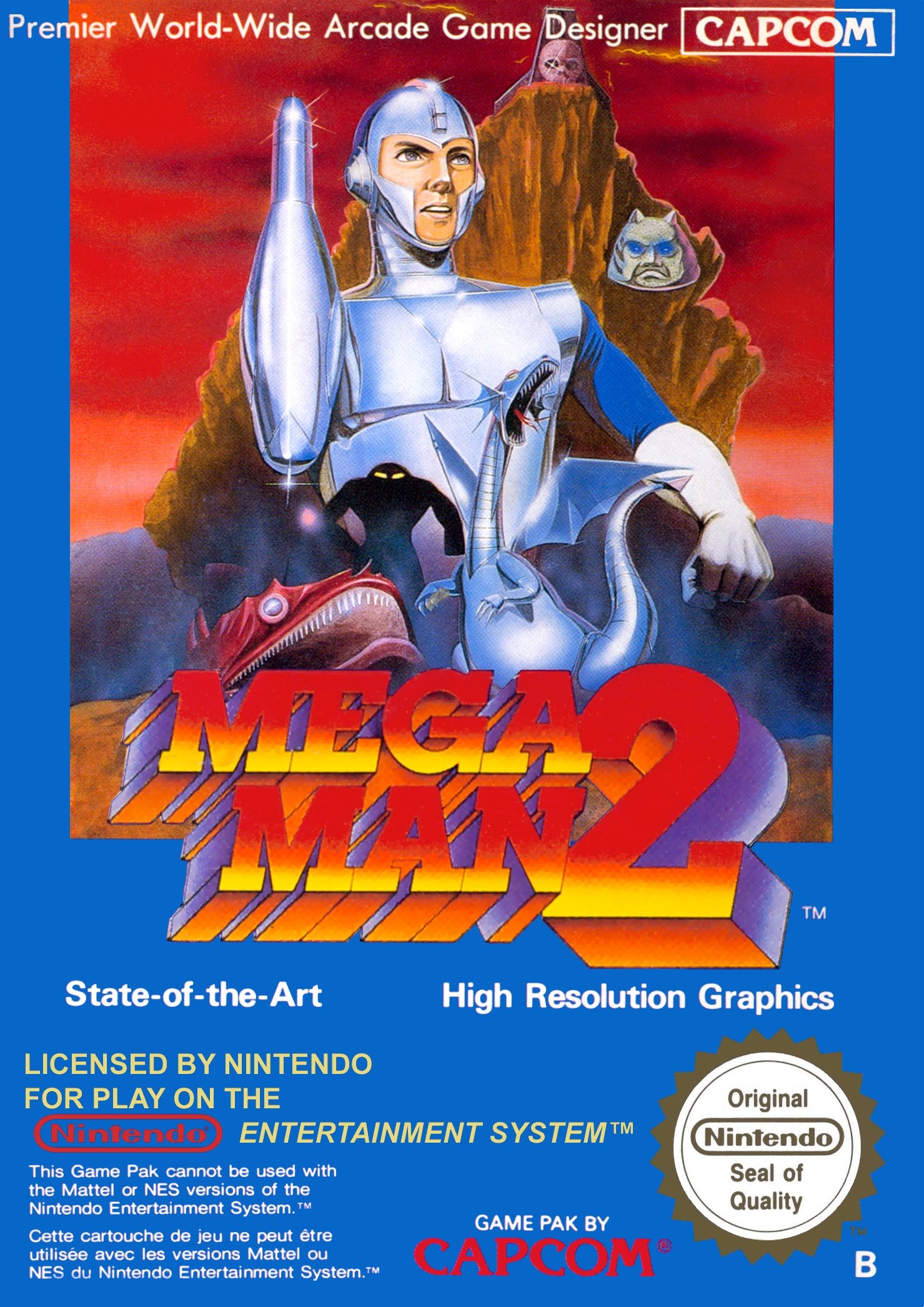
MEGA MAN 2
Mega Man 2, released for the NES in 1988 by Capcom, stands as a pinnacle of artistic achievement in 8-bit gaming. As the second installment in the iconic Mega Man series, it elevates the platforming genre through its meticulously crafted visuals, vibrant color palettes, and fluid animations, transforming each level into a visually stunning and immersive experience.
At the heart of Mega Man 2’s artistic brilliance is its detailed sprite work and character design. Mega Man himself is rendered with sharp, expressive sprites that convey his agility and determination. Each movement—from running and jumping to firing his trusty Mega Buster—is fluid and responsive, allowing players to feel a strong connection to the character. The diverse array of Robot Masters, each with unique designs and color schemes, adds visual variety and excitement to every encounter. These bosses are not only formidable foes but also masterpieces of sprite artistry, each embodying distinct themes and intricate details that make battles visually captivating.
The game’s environments are a testament to thoughtful artistic direction. Mega Man 2 transports players through a variety of themed stages, such as the fiery Hot Shelter, the icy Air Man’s stage, and the electrifying Spark Man’s area. Each level is adorned with richly detailed backgrounds that utilize a vibrant and varied color palette, enhancing the immersive quality of the game. The backgrounds feature layered designs and dynamic elements like moving platforms, animated hazards, and thematic decorations that bring each stage to life. This meticulous attention to environmental detail not only provides visual delight but also enriches the gameplay experience by creating distinct atmospheres for each level.
Animation in Mega Man 2 further elevates its artistic presentation. Despite the NES’s technical limitations, the game achieves remarkably smooth and dynamic animations. Mega Man’s actions, from executing precise jumps to unleashing rapid-fire shots, are depicted with clarity and fluidity, enhancing the sense of speed and responsiveness. Enemy movements and attack patterns are equally well-animated, ensuring that each encounter feels lively and engaging. The seamless transitions between different animations maintain the game’s pacing and visual coherence, making the action feel continuous and uninterrupted.
Visual storytelling is intricately woven into Mega Man 2’s design. Each stage not only presents unique challenges but also conveys parts of Mega Man’s quest to defeat Dr. Wily and his army of Robot Masters. Environmental cues, such as decaying machinery in the Wood Man stage or molten lava in the Heat Man level, subtly narrate the story’s progression and the escalating threat posed by Wily’s creations. These visual elements work harmoniously with the gameplay mechanics, creating a cohesive and engaging narrative experience that draws players deeper into Mega Man’s world.
The audio design complements the game’s visual artistry with its memorable and energetic soundtrack. Composed by Takashi Tateishi, the music features catchy melodies and dynamic tunes that perfectly match the diverse environments and intense action sequences. Sound effects, from the satisfying crack of Mega Man’s shots to the distinct noises of each Robot Master’s attacks, are crisply integrated, enhancing the overall sensory experience and reinforcing the game’s immersive quality.
Moreover, Mega Man 2 excels in its use of visual effects to enhance the artistic presentation. Particle effects, such as sparks from explosions and glowing power-ups, add layers of detail and excitement to the scenes. These effects are seamlessly integrated into the gameplay, elevating the visual appeal without distracting from the primary action. The strategic use of these effects not only beautifies the game but also reinforces the themes of technology and heroism that define Mega Man’s universe.
In conclusion, Mega Man 2 on the NES exemplifies how artistic vision and technical prowess can converge to create a visually stunning and immersive gaming experience. Its detailed sprite work, rich and varied environments, smooth animations, and cohesive visual storytelling elevate it beyond a standard platformer, making it a cherished classic that continues to be celebrated for its artistic craftsmanship and enduring charm. Mega Man 2 not only offers engaging and challenging gameplay but also stands as a remarkable piece of interactive art, showcasing the potential of 8-bit artistry to deliver epic and memorable adventures.

